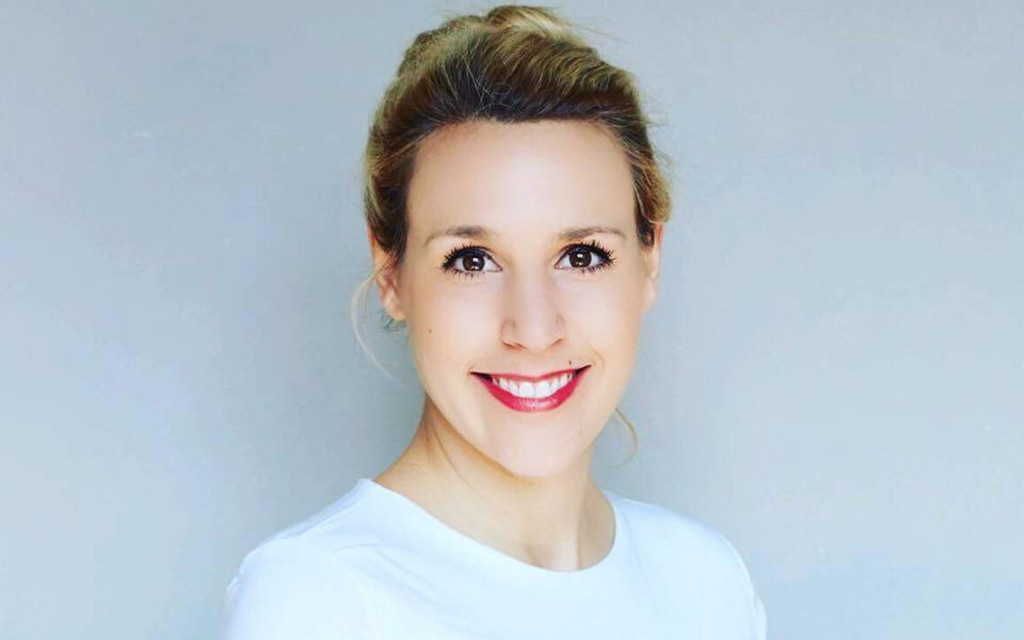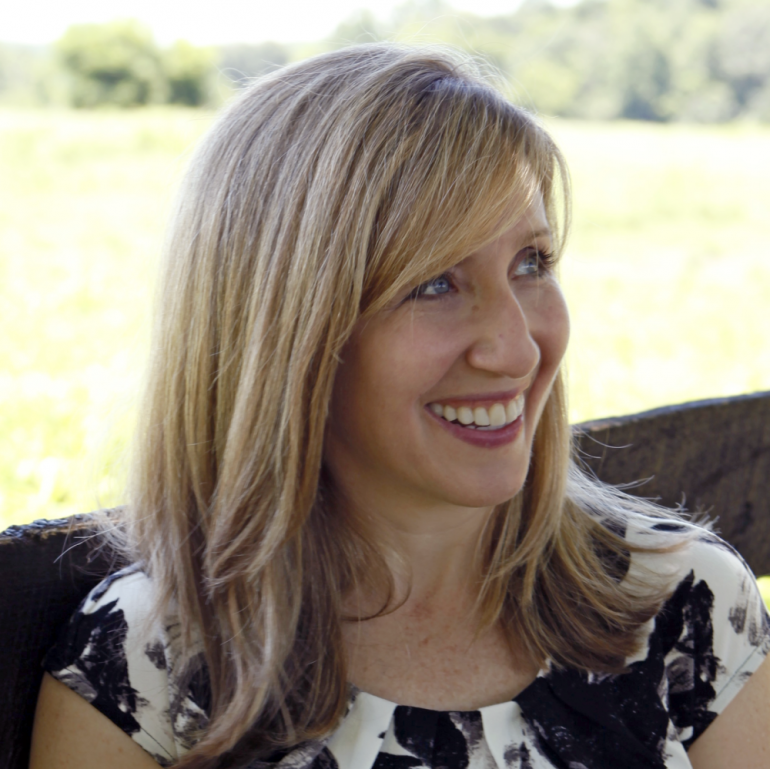Jennifer Dulski, one of the most powerful women in Silicon Valley and president of change.org, talks company culture, open communications and diversity.
Yahoo, Google – and now change.org
Jennifer Dulski left Google in early 2013 to become president and COO of change.org. She was one of the first 500 employees of Yahoo, where she stayed for nine years and eventually served as group vice president and general manager of local and commerce. Afterwards she started her own business, Dealmap – a startup for people to find and share offers on national brands, websites and local businesses. Dealmap was acquired by Google in 2011; she spent almost two years as a senior executive there. Jennifer writes and speaks a lot about topics such as workplace management, leadership and being a woman in tech.
Change.org has more than 90 million users worldwide, gaining 3 million new users every month, launching 30.000 petitions on the platform. In Germany, change.org has 3.5 million users. During her stay in Berlin for two days, we were able to speak to her about her plans with change.org in 2015 and challenges relating to diversity management in the workplace.
One of your key topics are workplace management and diversity – what are the challenges you face with regard to these topics at change.org this year?
„Well, our goal is to consistently hire talented and diverse people into the company and we have the belief – that I encourage others to have – that diversity makes the company better, that to have people not only of different genders but also from different work backgrounds, different ethnicities, different countries of national origin. We are better at representing our broad userbase, when we have employees in our team who also understand different perspectives. So the key thing for us is to really recognize what really matters and that gender diversity in particular is interesting because there is lots of research that actually show that teams with more women on them perform better and so we think that this is important and we keep a strong focus on it when hiring people.“
Your women ratio at change.org is quite good…
„It is – our company is 51 percent women. In particular our product development team, our technical team is 27 percent women and that’s quite an increase, so we’ve doubled the size of the team overall in the past year and we’ve tripled the number of women on the team, so we have been working hard to change that ratio, and then for us being a global company it is very important to have a diversity of reprensentations from different countries, so our leadership team is also 43 percent non-American which is important to us.“
Speaking of that ratio – in Germany we just had a law passed that sets a new women’s ratio of 30 percent, but only for companies quoted on the stock exchange, only a few more than a hundred companys will be affected by this law – why is it obviously so hard for a lot of men to accept that equality in the workplace is something positive?
„I think there is a sentiment that it is hard to find qualified women for certain jobs and I just don’t believe that that’s true. I think people are not looking hard enough for them and they are perhaps not looking in the right places. So as an example: When we went to say we want to hire more women, we went and looked at programmes like bootcamps that teach women in engineering or we also opened the doors wider to career changers, people who were changing their careers later in life, and to have an open mind about who you might bring in makes it a lot easier to find the right people to hire, but the research really does show that it’s worthwhile so it’s not just that it is diversity for diversity’s sake but it’s that diversity is good for business.“
In an interview with the New York Times you told the story about you as a tiny girl becoming a coxswain back in college, telling the boys how to steer the boat, and that you earned their respect by working out with them after the races because it showed them you were able to keep up with them – how do you do that today, earning respect?
„It’s funny, they sometimes say that women take care of their teams and men take charge of their teams and I like to say that the best leaders do both – and so part of the way that I believe respect is earned is first by taking care of people, showing them you care about them and what they want in their careers, what motivates them, and then the ‚taking charge‘-piece is creating a shared vision that people can follow. And that was true in a crew race where we were trying to be first down to the end of the the distance and it is also true at a company where we say: This is our mission and vision, these are the goals we are trying to achieve. And sometimes it comes in the form of being part of the team, not only telling people what to do, but doing these things with them. Sometimes it might mean if we are doing something late into the night to release a new product, I will stay with the team, if they are there, then I am there. And those kinds of things have carried over from the time when I was a coxswain until now.“
You said in an interview that you set high expectations on people and support them so that they can achieve amazing things, more than they even expect – but how do you find the right balance so you don’t overburden them? That people are not afraid not to be able to cope with the challenge?
„That’s a good question … when I say that I set high expectations I mean bold goals and objectives so the example that I gave there was when I was running a programme to help students become the first in their families to attend university. Setting a goal that is fairly far out into the future but is more than what people expected of themselves is helpful to give them a vision of what they might achieve and then the steps of how you get there is where you put in the support so you help them understand the path from here to there. It’s not that I immediately expect this huge thing of you tomorrow. It’s how we can set an expectation that has a bold objective into the future and break it down into its steps so that together we know it can be achieved.“
You say people of your team can always come to you with any problem as long as they have at least three solutions to offer – but sometimes you just want to be able to come to your boss without a solution, just to get some comfort, or impulse? Could that also happen?
„Yes … I have adapted this rule over the time. I have to say that I have realized that three solutions might be too much, so any idea for a solution qualifies. I think that certainly there are times when people want to go to their bosses and just want to talk about how they are feeling and that’s OK, and that it has to do with the amount of time, so what I look for is people who are solution-oriented by nature and who can see the brighter side of the situation. And if you think about it: Our whole company is about this – the belief that things can change and that everyday people can create change and so we look for people on our team who believe that and it might mean that the first day they’re facing a big problem they just want to talk about it and say ‚this is really hard‘. What I want to make sure is that at some point they can really get past that and start to see the ideas for how to solve the problems. And then I am happy to work with them on it, it’s not that I exect people to entirely solve their own problems but once you start thinking about a solution then you get in a joint problem solving space, that is a lot more productive than a joint complaining space.“
Is there something that for you as a leader is really hard to perform, a value you request from your team that is hard for you to live sometimes?
„The thing that comes to mind here is that sometimes it’s not obvious that there is a right answer. What’s important in my job is to create clarity for people, to set clear goals but along the way there are a lot of choices and sometimes it’s clear what decision to make and sometimes it’s less clear. And so that’s the thing that sometimes I wish that I had more time to sort of walk people through, because it’s not always obvious when you make a decision at a company and you got a global team spread all around the world how to communicate what decisions were made, or the fact that sometimes we are just doing our best and we might even try something and fail – we are a tech company, so sometimes we test things and they work and sometimes we test and they don’t, and that’s a sort of a mentality we have to have but that’s the hardest thing, the communication around all the things we do and to try to make it as clear as possible to people. Part of why I travel to the offices around the world is it’s so much easier when you are face to face, people can ask you questions, you ask them, get a sense of their day-to-day experiences and that really helps us really being better in running the company, so I really enjoy trips like this one to Berlin.“
What are the biggest challenges you face with change.org this year?
„One of the biggest things we are focused on for this year is moving beyond petitions as a megaphone for everyday people talking to people in power but instead turning it into more of a conversation and a dialogue and so we’ve built a tool called verified decision makers where people elected officials, and company CEOs and so forth can sign up to become a decision maker that is the recipient of a petition and when a petition is directed at them they can now respond directly to all the people who have signed the petition. And we’ve seen success on this beta version of the product last year, we had acually more than 3.000 decision maker responses and we are quite excited about where the product can go with that direction, it really is the only social media tool out there that gives people in positions of power the ability to talk directly to their constituents because if you do this on Facebook or Twitter you don’t have any control over who actually sees your response whereas here we email your response directly to the signers of the petition. And so we have seen examples like Uber in India: After they had a big crisis where an Uber driver raped a woman there was a petition started to them and within a few weeks it had tenth of thousands signatures and Uber was able to come on and respond and do not only what the petition asked for which was doing stricter background checks, but they put out a whole five points safety plan which allowed them to go a step beyond what was requested and to make the signers of the petition really happy that they had been heard and that Uber was doing the right thing, and we increasingly have members of Parliament signing up and so we expect to see a lot of movement on that this year.“
– In eigener Sache –
EDITION F Webinar mit ArtNight und Fielfalt-Gründerin Aimie-Sarah Henze: Crashkurs Leadership – Wie du dein Team erfolgreich organisierst.

Im Webinar am 27. April 2017 spricht Aimie über ihre Erfahrung als Führungskraft im Großkonzern und als Gründerin. Sie gibt dir u.a. Tipps, wie du dich als Führungskraft positionierst und wie du dein Team aufbaust, organisierst und motivierst. Jetzt mehr erfahren und Tickets sichern!
More international voices on EDITION F
Lena Dunham’s advice for all girls: Read on
Ayelet: „Israel is the second Silicon Valley“. Read on


